Planting Garlic in the Fall
This post may contain affiliate links, which means that I may receive a commission if you make a purchase using these links. As an Amazon Associate I earn from qualifying purchases.
Planting garlic in the fall is the last garden chores of the season. A small amount of preparation at planting time will give you an abundant garlic harvest without much effort.
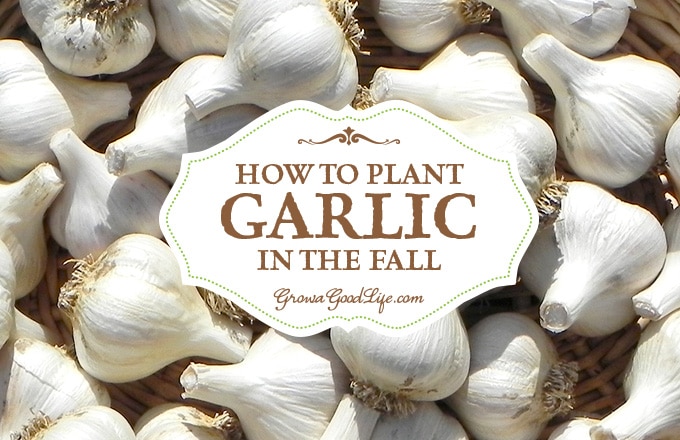
Garlic is one of the easiest crops you can grow in your garden. It is a long season crop with a unique growing pattern compared to other garden crops. Garlic is planted in fall in order to give it a head start and enough time to produce a larger bulb.
Also read 7 Tips to Growing Great Garlic
How to Plant Garlic in the Fall
Planting garlic in the fall allows the roots to begin growing. When winter arrives and the ground freezes, the plants go dormant. Once the soil warms up in the spring, the garlic will start growing again right where it left off.
Prepare Your Growing Bed
Garlic thrives in full sun and loose soil. Choose a garden bed that has not grown anything in the onion family in the past two years and one that receives an average of at least six hours of sunlight each day. Remove weeds and spread some slow-release organic fertilizer according to the package direction. Add about 2-inches of finished compost and work it in the top 4-6 inches of soil.
Plot out your growing bed 4-6 inches in all directions. Dig your holes about 4-inches deep. If you are using the square foot gardening method, plot 6 cloves per square.

Divide Your Garlic Seed
When you purchase garlic seed, you are actually getting heads of garlic. Garlic is grown from individual cloves. Each clove will grow into a bulb of garlic.
Separate your cloves right before planting. Sort out your largest and healthiest looking cloves for planting. If you plant the largest cloves, you will grow larger heads of garlic for next year. Save the smaller and damaged cloves for cooking.

Plant Your Garlic Cloves
Plant a garlic clove into each hole, with the flat side down and the pointy end up. Cover and firm the soil.
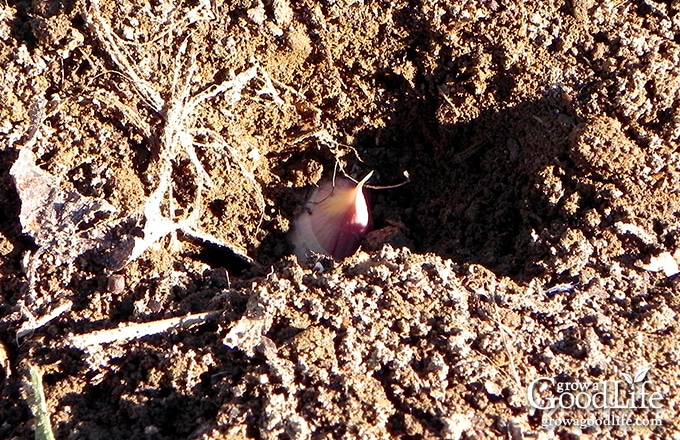
Mulch Your Garlic Bed
Water the garlic bed well after planting and cover with a light layer of mulch, such as straw or shredded leaves. Aim for about 2-3 inches of mulch to keep the weeds down until the ground freezes.
After the ground freezes, add another layer of 2-3 inches of mulch to insulate the soil. This helps prevent the garlic roots from being heaved out of the ground by alternate freezing and thawing.
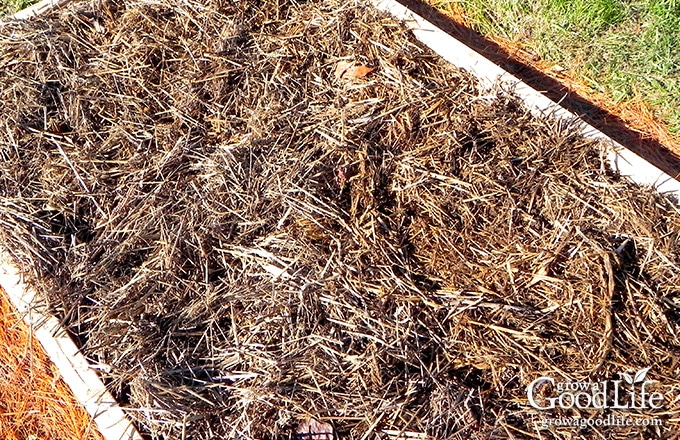
Once the soil warms in spring, you will see green garlic shoots growing through the mulch. If you used an all-purpose organic fertilizer at planting time, your garlic is off to a great start. Water the garlic bed during dry spells when the soil feels dry an inch beneath the surface. Feed with organic fish emulsion fertilizer if the foliage shows signs of stress (yellow tips). Follow the directions on the bottle.
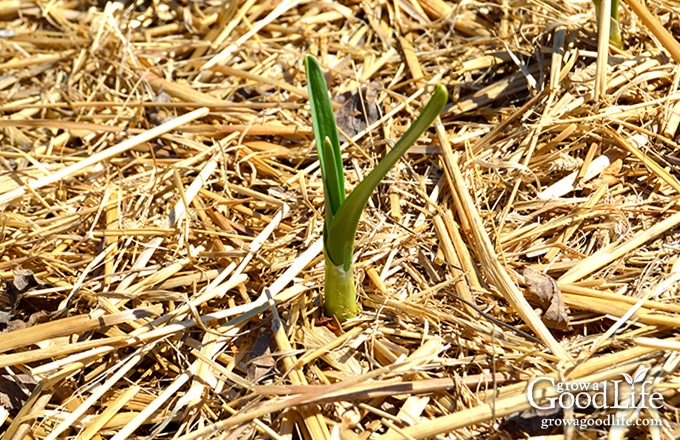
If you planted hardneck garlic, you will have an opportunity to harvest garlic scapes a few weeks before the garlic bulb is finished growing. These tender, mildly garlic flavored shoots are delicious.
You May Also Like:
- 7 Tips to Prepare Your Vegetable Garden for Winter
- How to Harvest Garlic Scapes
- 10 Ways to Use Garlic Scapes
- How to Harvest, Cure, and Store Garlic for Winter
- How to Plant Garlic in Spring
Good planning is key to a successful vegetable garden
Whether you are new to growing your own food or have been growing a vegetable garden for years, you will benefit from some planning each year. You will find everything you need to organize and plan your vegetable garden in my PDF eBook, Grow a Good Life Guide to Planning Your Vegetable Garden.
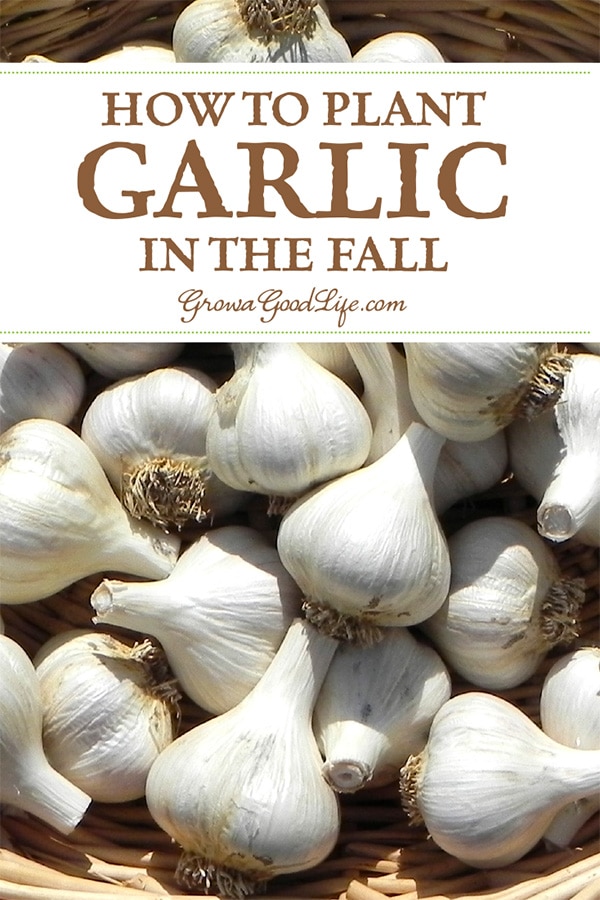


Great info, first time at growing garlic! Can not wait!
I have read that it is good to put the garlic heads outside for a while to allow them to acclimate to the ambient temperature.
I have read that the heads/cloves should be soaked before planting.
Please give me your opinions on the above.
Thank you,
Rogeg
Roger, There is no need for these extra steps. Garlic is cold hardy and soaking may actually cause the garlic to mold or rot when planted.
I start my garlic in a bottle of water. The green shoots are just now appearing. I would like to plant them in a container, do I leave them inside? Do I out the container outside? Help! Where do I go from here? 🤦♀️😂
Stacey, It depends on what you want out of your garlic. If you are only interested in garlic shoots, you can grow your garlic indoors. However, if you want to grow heads of garlic, you will need to plant your garlic outdoors. Garlic needs a period of cold winter temperatures for the clove to divide into separate cloves that form the head.
Either way, you can plant your garlic in containers. Fill your pot with potting soil, poke holes, and place the rooted cloves about 2-4 inches apart and 1 inch deep. Fill in gently with soil, and water well to remove any air pockets.
I have a square foot garden and understand to plant the cloves 4 inches deep. How much soil should be below that 4 inches?
Janet, The garlic will grow roots into whatever soil you have. If your square foot garden is on the ground, the roots can penetrate deep into the soil below your square foot garden as it grows. If your raised bed is on a hard surface, the roots will spread sideways.
Do I need to lay mulch in the fall for winter nor the wooden cover over my beds suffice?
Patty, Mulch helps keep the weeds down and helps prevent the garlic cloves from being heaved out of the ground by alternate freezing and thawing.
I have a container garden. Can I still follow yours basic instructions? What will I need to do differently since the cloves will be planted in a container? I bought a rectangular container for garlic. It’s narrow but kind of long.
Jenny, Growing garlic in containers is just as easy as planting in the ground. I suggest using a deep container, at least 12-inches or deeper, and add some all-purpose fertilizer at planting time, and again once the garlic begins to grow in spring. Plant the cloves about 3-inches deep and 3 inches apart. Let me know how you make out!
Hi, if your cloves have already started to sprout (still having a few hot days), is it a good idea to start from the beginning or will these possibly survive until spring?
Lisa, If you garlic is sprouting, I would go ahead and get it planted. It will begin growing and then stop once the cold weather comes.
Did I miss it somewhere? When do you know or how do you know when to harvest the garlic bulbs??
Kater, Harvesting and curing garlic is in a different article linked above: Harvest, Cure, and Store Garlic for Winter
So forgive me if I sound dumb…Do you actually plant the cloves of garlic, and without peeling??
Yes, garlic is grown from individual cloves. Each clove will grow into a bulb of garlic. There is no need to peel your garlic before planting.